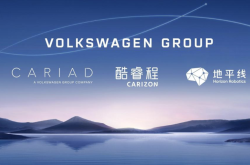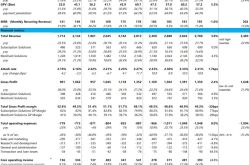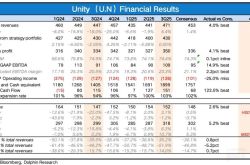Great Wall Motor’s New Energy Strategy: Staying Out of the Rat Race
![]() 07/18 2024
07/18 2024
![]() 514
514
 The Transformation of Traditional Automakers into New Energy Players: A Self-Revolution.
The Transformation of Traditional Automakers into New Energy Players: A Self-Revolution.
Edited by: Xiao Ying
While other automakers are engaged in a bloody battle for strategic transformation towards new energy, Great Wall Motor seems to be enjoying the profits of fuel vehicles.
Great Wall Motor’s 2024 half-year performance forecast shows:
In the first half of 2024, Great Wall Motor is expected to achieve a net profit attributable to shareholders of 6.5 billion to 7.3 billion yuan, an increase of 377.49% to 436.26% compared to the same period in 2023;
The net profit attributable to shareholders after deducting non-recurring gains and losses is expected to be 5 billion to 6 billion yuan, an increase of 567.13% to 700.56% compared to the same period in 2023.
Great Wall Motor’s development philosophy has always been “profit first.” Wei Jianjun, Chairman of Great Wall Motor, once said, “In this market, if I can’t make money, almost no automakers in China can make money.”
Profit-driven, Great Wall Motor appears hesitant in its new energy transformation.
In 2023, Great Wall Motor sold 262,000 new energy vehicles, a year-on-year increase of 98.7%, but far from achieving the 600,000 target set at the beginning of last year.
From January to June this year, Great Wall Motor sold 132,400 new energy vehicles, still up 42% year-on-year, but the total volume is not impressive.
In terms of product structure, new energy sales accounted for only 23.7% of Great Wall Motor’s total sales in the first half of the year, with plug-in hybrids dominating the new energy portfolio, while pure electric vehicles accounted for just 5.7%.
Meanwhile, among Great Wall Motor’s brands, some are thriving while others are struggling.
Tank is the profit cow, while Haval and Great Wall Pickup are developing steadily overall. However, WEY and Ora are facing challenges, and they are precisely the main force in Great Wall Motor’s new energy transformation.
The “profit first” strategic concept has allowed Great Wall Motor to win in the fuel vehicle race, but in the new energy market, its investment and influence are far from sufficient.
In the increasingly competitive new energy race, is Great Wall Motor’s strategy of staying out of the rat race and quietly making money pragmatic and clear-headed, or short-sighted?
Regardless, Great Wall Motor’s path towards new energy transformation is destined to become a typical case in China’s automotive industry.
01
An Uncertain New Energy Strategy
From a technical perspective, Great Wall Motor’s bets have always been on the right track, even earlier than some competitors.
In 2006, Great Wall Motor established the New Energy Engineering Research Institute to conduct independent research and development of new energy vehicles, with the goal of applying plug-in hybrid technology to SUV products.
In 2018, Great Wall Motor launched the ME platform, a dedicated platform for pure electric vehicles, but until the launch of the Ballie Cat in July 2022, this platform was used to develop entry-level products priced below 150,000 yuan.
In terms of hybrids, Great Wall Motor released its Lemon Hybrid DHT system as early as 2020, one year ahead of BYD’s DM-i hybrid platform.
At the beginning of 2023, Great Wall Motor launched its new intelligent four-wheel drive electric hybrid technology Hi4, proposing the slogan of popularizing four-wheel drive in the new energy era.
In terms of technical accumulation and ecological layout, Great Wall Motor did not enter the game late. However, the problem lies in its hesitation compared to other competitors, leading to a slow pace in its new energy layout.
At the 2016 Great Wall Motor shareholders’ meeting, Wei Jianjun said, “Great Wall Motor will only be a follower in the new energy vehicle market. Our power generation mainly relies on coal, and the energy conversion process is not environmentally friendly. In fact, electric buses pollute 10 times more than natural gas buses.”
This set the tone for Great Wall Motor’s subsequent new energy strategic transformation, positioning itself as a follower rather than a leader.
As a result, although Great Wall Motor has laid out new energy technologies, it has not gone all in, in contrast to BYD’s all-in approach in the new energy race.
In 2014, BYD’s new energy vehicles accounted for only 45% of its total sales, but by 2021, this figure had risen to 82%. In comparison, Great Wall Motor’s new energy vehicle sales accounted for only 10.7% in 2021, lower than Wuling Hongguang’s share (30%) within SAIC-GM, and only 23.7% in the first half of 2024.
Li Ruifeng, Chief Growth Officer of Great Wall Motor, once admitted, “Great Wall Motor’s new energy transformation has indeed been slow.”
Fu Xiaokang, Vice President of Great Wall Motor, also said that the company is reflecting internally on why its new energy vehicles have not fully captured consumers’ attention.
Meanwhile, it is clear that compared to other automakers that are heavily betting on the pure electric market, Great Wall Motor’s new energy layout is dominated by plug-in hybrids, with the pure electric brand Ora focused on the female market.
However, Ora’s sales have not been good in recent years. In 2021, Ora sold a cumulative 135,000 pure electric vehicles, a decent performance for a new entrant in a niche market.
However, in the same year, Great Wall Motor discontinued the so-called unprofitable but sales-supporting Black Cat and White Cat models under Ora, shifting to the 150,000-200,000 yuan market and ceding the 100,000 yuan A0-segment market to competitors.
The Ballie Cat and Lightning Cat series launched in 2023, priced in the 150,000-200,000 yuan range, have not sold well due to their lack of competitiveness in terms of product strength and cost-effectiveness in today’s market. Ora sold 6,005 vehicles in June this year, nearly halved from 10,616 vehicles in June last year.
Meanwhile, plug-in hybrids have borne the brunt of Great Wall Motor’s new energy sales. From January to June this year, Great Wall Motor sold 132,400 new energy vehicles, up 41.99% year-on-year. Among them, the Tank Hi4T model sold 49,000 units, accounting for 35.56% of total sales.
However, from an overall sales perspective, fuel vehicles still dominate. For example, in September 2022,Haval launched its first plug-in hybrid model, the Haval H6 DHT-PHEV, but the plug-in hybrid version accounted for only 20% of total H6 sales.
The Haval Hawkeye series launched in 2023, touted as the “Haval H6 of the new energy era,” has failed to live up to its promise with monthly sales of only 400 units. In other words, the Haval brand’s sales are still mainly supported by fuel vehicles.
Amid the vigorous new energy movement, compared to competitors like BYD and Geely, Great Wall Motor seems to be moving at a slower pace with less buzz and heat.
The underlying issue is that Great Wall Motor’s new energy strategic transformation aims for both high-end positioning and profit, but lacks a best-selling product to drive sales, resulting in self-imposed limitations.
02
Great Wall Motor: Wanting It All
Unlike other traditional automakers that have continuously launched new brands, Great Wall Motor’s approach to the new energy race is based on transforming its existing fuel vehicle brands.
Wei Jianjun once said, “Great Wall Motor differs from other automakers in its brand-building path, focusing on creating brands by category.”
Currently, Great Wall Motor has five brands:Haval, WEY, Tank, Ora, and Great Wall Pickup.
From Haval SUVs to WEY business vehicles, from Tank off-roaders to Ora new energy vehicles, the fundamental basis of Great Wall Motor’s multi-brand strategy lies in the distinctiveness of each brand, which prevents confusion and allows them to excel in their respective industries.
According to Great Wall Motor insiders, the once-star product Haval H6 has now been surpassed by the entire Tank series, which sold a cumulative 116,038 units in the first half of the year, up 98.94%.
Currently, apart from Ora’s focus on pure electric vehicles and Great Wall Pickup’s focus on pickups,Haval, WEY, and Tank are all transforming towards new energy and have successively launched hybrid models. Moreover, Great Wall Motor’s pricing for these hybrid models is generally on the high side.
It is clear that in the new energy race, Great Wall Motor aims for both new energy transformation and high-end profitability, with an unwavering ambition to elevate its brands.
Taking the Tank series as an example, the Tank 300 is priced in the 199,800-226,800 yuan range; the Tank 400 Hi4T costs 289,800 yuan; the Tank 500 is priced between 335,000 and 395,000 yuan, with the 500 Hi4T version priced at 335,000 yuan, and the 700 Hi4T even reaching 428,000-468,000 yuan.
WEY, as the brand originally intended to elevate Great Wall Motor, targets the executive and business scenes, with the WEY Gaoshan priced in the 335,800-405,800 yuan range and the WEY Lanshan priced at 273,800-308,800 yuan; the new Mocha Hi4 Long Range version costs 238,800 yuan.
The latest Haval H6 has also seen a price increase compared to its predecessor. The old Haval H6 had a starting price of 98,900 yuan, while the new Haval H6 starts at 117,900 yuan. Even with limited-time discounts, the lowest price is still 103,700 yuan, and the plug-in hybrid version starts at 144,800 yuan.
Additionally, the fuel version of Haval Second Dog starts at 135,800 yuan, while the Haval H9 is priced between 214,800 and 279,800 yuan. In comparison, the plug-in hybrid versions of Haval Menglong start at 165,800 yuan,Haval Hawkeye at 159,800 yuan, and Haval Second Dog PHEV at 162,800 yuan.
In the highly competitive new energy market, Great Wall Motor has chosen to maintain prices and profits rather than engage in a price war.
However, sales figures suggest that many consumers are not buying into this strategy.
As mentioned earlier, among Great Wall Motor’s five brands, only Tank has achieved significant sales growth, while the performance of other brands is not impressive. Even the new generation of Haval H6 fails to recreate the sales miracle of its predecessor.
Creating brands by category, in a vertically integrated market, a best-selling model can undoubtedly drive overall market demand towards that model. The more vertical the scenario, the smaller the market demand. The Tank series, with its rugged off-road brand, has turned a niche off-road market into a mass market with just the Tank 300.
However, so-called categories also mean more niche, segmented markets. If it is impossible to create a best-seller in a niche market, it will be difficult to sustainably occupy market share in that field. For example, the Ora brand targets niche, female-oriented models and discontinued its high-volume models priced below 100,000 yuan, making it virtually impossible for Ora to carry the banner of Great Wall Motor’s new energy brand.
Haval’s success lies in pioneering the 100,000 yuan urban SUV market; Tank’s success stems from redefining the off-road SUV market. Clear product positioning and accurate brand positioning have contributed to the success of Haval and Tank today.
However, blindly transforming existing fuel vehicle brands into new energy ones, with the main new energy models not being pure electric, makes it difficult for Great Wall Motor’s new energy vehicles to penetrate consumers’ hearts. Consumers looking for pure electric vehicles are unlikely to consider Great Wall Motor as their first choice.
03
In Urgent Need of a New Energy Best-Seller Brand
In the new energy transformation of other automakers, the multi-brand development strategy of “more children, better fighting” is often adopted, such as Changan’s Shenlan, AVATR, and Qiyuan, Geely’s Zeekr, Geometry, and Polestar, and Chery’s Star Epoch and iCar.
In contrast, Great Wall Motor’s main strategy is to transform its existing fuel vehicle brands into new energy ones, which does not give consumers a clear understanding of its new energy system, and consumers looking to buy new energy vehicles may not think of Great Wall Motor.
Industry insiders believe that for Great Wall Motor to achieve a true new energy strategic transformation, it should perhaps launch a brand-new new energy sub-brand rather than continuing to sell new energy products under the same brands as fuel vehicles.
The Ora brand can continue to target niche and female-oriented vehicles, while Great Wall Motor should also establish an independent mid-to-low-end new energy brand to capture the 60,000-150,000 yuan market.
At the same time, for the high-end market above 200,000 yuan, a separate brand should be launched to redevelop models and capture the more premium market. Specific brand positioning should fully consider differentiation rather than striving for comprehensiveness.
The new energy transformation of the automotive industry, for traditional automakers, is essentially a self-revolution.
The research and development, production, and marketing models of fuel vehicles and new energy vehicles are vastly different. Shedding historical burdens and starting anew is precisely why many traditional automakers establish brand-new brands.
Self-revolution requires courage, determination, and accurate judgment of market trends.
Is Great Wall Motor’s hesitation in investing in the new energy market a lack of determination, or is it based on a different assessment? Perhaps time will provide the answer.








